Is backpacking the Philippines expensive? How much does it cost to travel around the Philippines for 2 whole months?
Well, if you’ve ever wondered about any of those questions, you’ve just found the right article to read!
You might have read other posts about travel budgets in Southeast Asia, and you might have heard that the Philippines are more expensive than other countries in the region. That is correct, BUT it doesn’t have to be more expensive.
It is totally possible to travel around the Philippines, dine out, sleep comfortably, go scuba diving and explore the most beautiful islands on a budget – on exactly 22 € per day!
You think that’s not possible? Well, in this post, I’m going to be revealing my travel expenses for my 7-week backpacking trip around the Philippines, after which I even ended up working there for another 4 months.
If you’re interested in a shorter backpacking route, check out this 2-week Philippines itinerary, which guides you to the best spots in the Central Philippines in only 14 days.
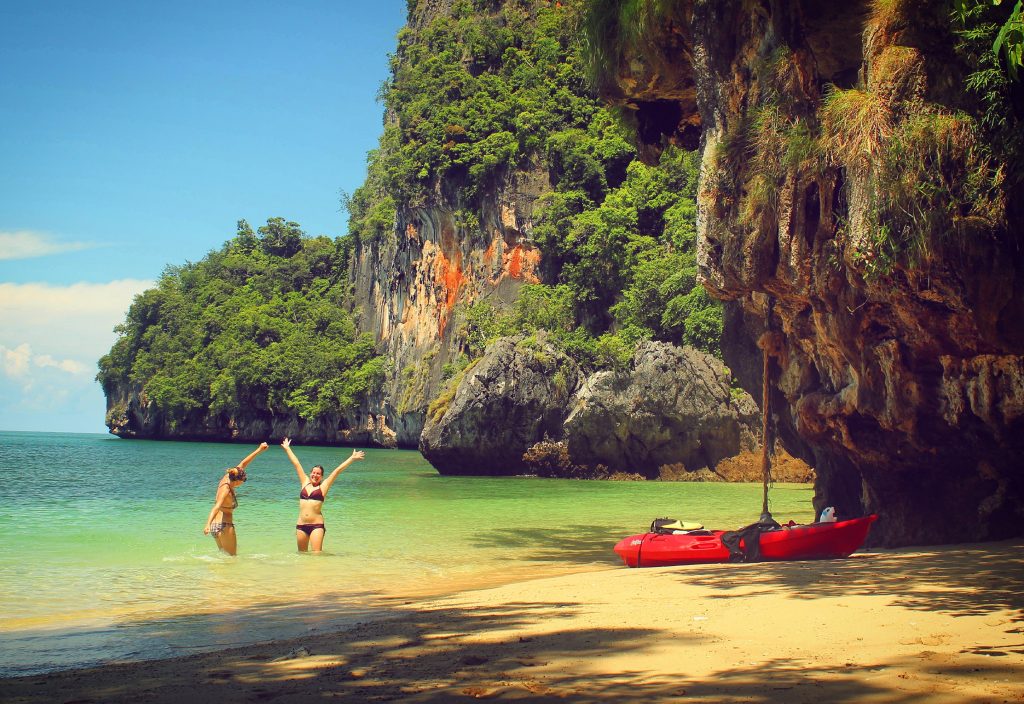
How Much Did My 2-Month Philippines Trip Cost?
On our 2-month trip, we spent a total of: 1200 € (excluding flights), which works out to be 22,20 € per day.
| Accommodation | ₱19.049,50 (ca. 350€) |
| Transport | ₱14.363,83 (ca. 250 €) |
| Food & Drinks | ₱20.991,17 (ca. 370 €) |
| Activities | ₱13.065,00 (ca. 230 €) |
My Philippines Travel Budget Breakdown:
Accommodation: 350 €
6,40 € per day
A total of 350 € for a 2-month trip is really not much for accommodation. So, how did we manage it?
Well, first of all, accommodation in Southeast Asia is generally not expensive compared to other parts of the world, especially if you stay in budget accommodations like hostels, small guest houses or homestays.
We had a total of 54 nights in the Philippines, three of which we spent on either a night bus or an overnight ferry ride.
Since hostels and guest houses are available in most places in the Philippines, we hardly stayed at proper hotels and therefore never had to spend more than ₱ 450 (8 €) pp/day on accommodation. We usually went for economy fan-rooms, which often came with a shared bathroom. Only 2 or 3 places had air-condition and/or an en-suite bathroom.
However, it is possible to travel even cheaper by staying in dorms every night. Dorm beds are definitely more budget-friendly if you are traveling solo.
Our best value deals in the Philippines:
George’s Guesthouse in Sagada (Beautiful room, balcony, bathroom) for ₱ 700 (12,30 €)
Kentian Star Tourist Inn in Panglao (Spacious room, a/c, bathroom) for ₱ 840 (14,70 €)
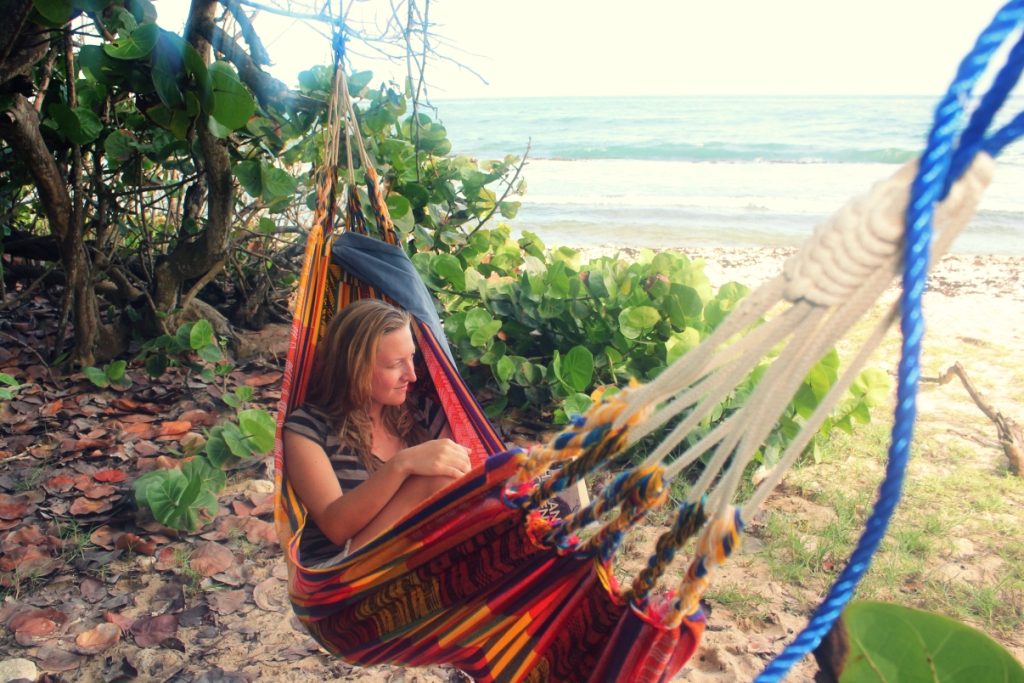
Transport: 250 €
4,60 € per day
We spent a total of 250 € each on transport. This amount includes all fares, transfers, tricycles, buses, motorbike rentals, etc.
Public transport in the Philippines is generally cheap, especially if you take the chicken buses and local ferries.
For long distances, we usually opted for a Ceres bus, though most of the time we would choose the local option, a no air-conditioned bus. The Ceres buses are the most efficient bus lines and serve many routes on a daily basis.
If you prefer traveling fast and more comfortably, go for a minivan, which you can often buy tickets for through your accommodations.
There are also significant differences in the ferry operators. While the most “tourist-friendly” ferry lines in the Visayas are undoubtedly Ocean Jet and Super Cat, we often preferred less commercialized local companies, such as Montenegro Shipping Lines or Lite Ferries, and ended up paying only half the price than what you have to fork out to get on a fast vessel.
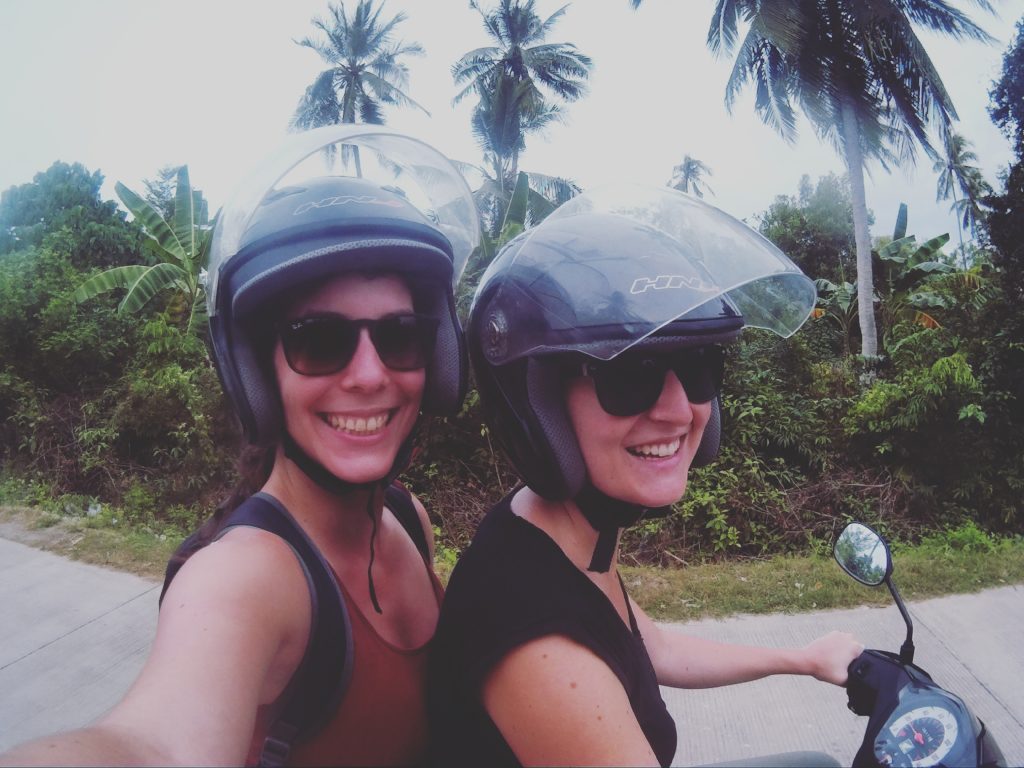
In Palawan, Bohol and Siquijor, it is super easy to explore the area on a scooter. Motorbikes can be rented for as little as ₱ 250 / day in some places and therefore are a cheap and convenient way to get around.
Now and then we had to take tricycles to get around, which are, of course, a little more expensive than renting your own scooter, though for short rides, it’s definitely worth it. To avoid being ripped off, we would always arrange the price beforehand. And for round-trips, we would pay the driver AFTER he drove us back to where we wanted to go. If you pay him after he drops you off the first time, he might just leave and not wait for you.

Food & Drinks: 370 €
6,90 € per day
First of all, let me say that it is not too hard to save money on food in Southeast Asia.
However, although the Philippines are such a poor country, the food is rather expensive in comparison to Thailand, Vietnam or Malaysia.
Of course, saving money on food totally depends on what you eat, what you drink, and how much you are willing to spend on food.
We had a lot of street food while traveling around the Philippines, which is cheap and pretty much available on every street corner. Most of the time, we would go for a barbecue, which consisted of grilled meat that’s served with a portion of rice, soya sauce and fresh calamansi. Depending on the meat we chose, this dinner option cost us between ₱ 170 -250 together.
Other cheap lunch/dinner options are eateries, which offer all kinds of vegetable dishes that you can choose from. A big plate is usually around ₱ 100, including rice.
As for alcohol, we sometimes had a San Miguel beer or two, though we didn’t spend a lot of money on any other alcohol or cocktails. If you buy local beer in a supermarket, it’s around ₱ 50, though if you order it in a restaurant or bar, it’s usually sold at ₱ 80 – 100. Compared to soft drinks, beer is rather expensive, so if you like to party and drink a lot, be sure to plan an extra budget for that.
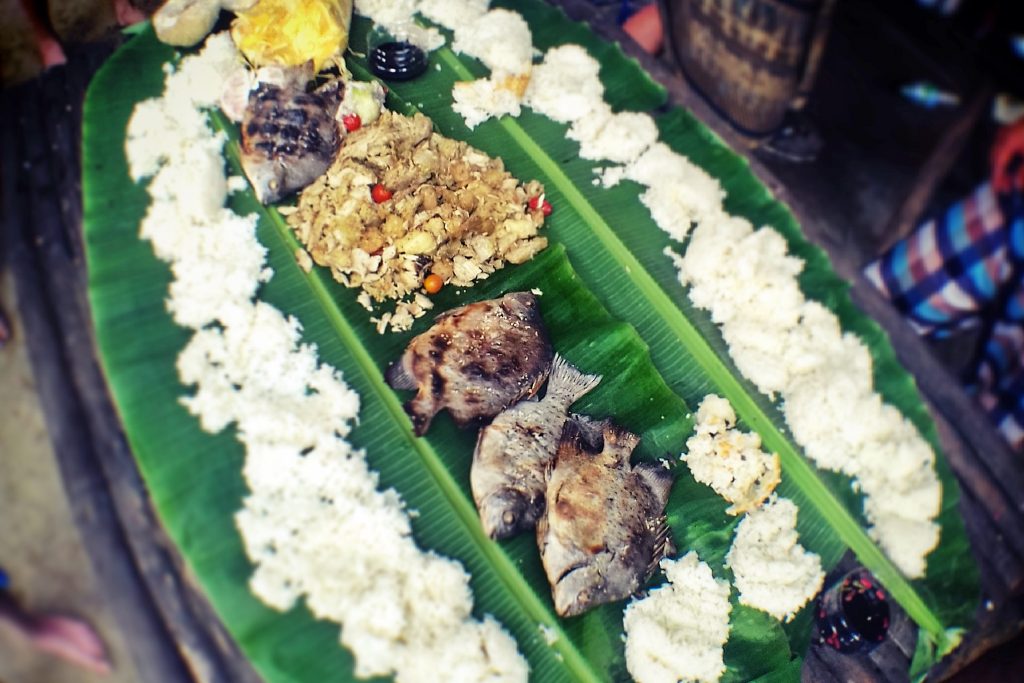
Activities: 230 €
4,30 € per day
Of course, we didn’t pay for activities every single day. In fact, on most days we went to explore places on our own or participated in cheap activities offered by some of the hostels that we stayed in.
Now and then, we had to pay for activities, which were usually a lot more than 4,30 €.
For example, scuba diving. In case you were wondering: yes, scuba diving is actually included in the 230 € total costs for activities. We did a total of 6 dives – 2 dives in Coron, 2 dives in Balicasag and 2 dives in Malapascua. Two boat dives are usually between ₱ 2500 – 3000 depending on the location, dive shop and dive sites you want to see. We spent a total of ₱ 8250 (ca. 145 €) on scuba diving.
>> See also: The Best Dive Sites In The Philippines
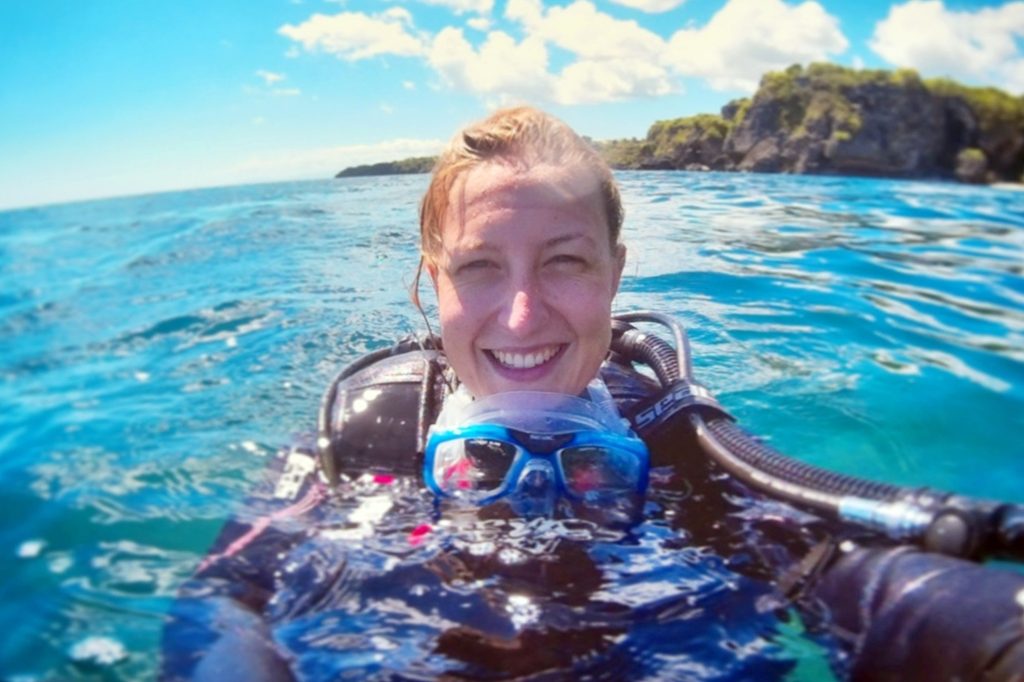
Learn more about ways to save money when scuba diving!
ULTIMATE GUIDE TO BUDGET DIVING
Also, sometimes we booked tours online or in advance to be able to get some discount and to make sure that we can actually take part in the activity on that particular day.
Recap: How To Save Money On A Backpacking Trip In The Philippines?
- Stay in Hostels
- Book rooms on Airbnb / Homestay
- If you have time, take a slow ferry
- Take an overnight bus for long distances
- Arrange tricylce prices beforehand
- Eat where the locals eat (street food, eateries)
- Avoid fancy food, alcohol and snacks that you don’t really need
- Find local tour operators / dive shops
- Go on free tours, affordable day trips offered by hostels
- Book certain attractions/activities way in advance + look for online discount
- When booking onsite, always negotiate the price



4 Responses
Fabulous- looking forward to reading about your adventures.
I hope you have fun! Its going to be a blast! I was wondering if you could tell me how you got the countdown on the side of your blog! I love that, and have been looking for a countdown similar!
Hi there! Thank you! The countdown on my side is a widget called ‘milestones’. I think it might only be available for a number of WordPress themes. It is a free widget, though.
Ok Ill go check for it! Thank you so much! 🙂 Keep doing what you’re doing! <3